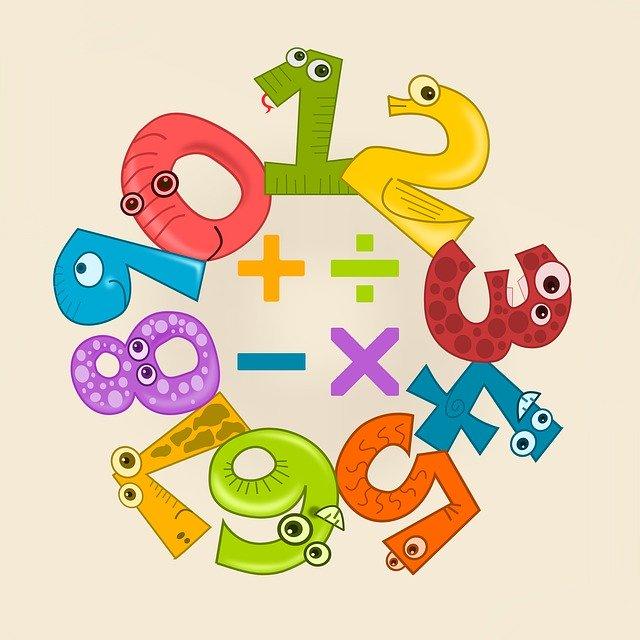"Divide each difficulty into as many parts as is feasible and necessary to resolve it." Rene Descartes
While 'sharing' may not be the first word that comes to mind when you think of division, it should be. Why should you handle the stress of tackling a long division sum on your own when you can rather rope in a tutor to help you. The key to getting better at the basic math operations is to practice. If you have tried all the division exercises in your math textbook, you may want to try some more division examples from other textbooks on your own. This us where your math tutor will assist. Dividing your workload slightly by allowing your math tutor to find math exercises for you will be the best way to divide the responsibility that you have and will ensure that you pass and do well at solving math problems.
While the idea of dividing your math workload with a tutor who can help you get through the math hurdles sounds like a great idea, the concept of tackling complex division sums on your may seem more burdensome.
However, there is no need to fear division any longer. In the same way that we helped you to understand fractions better, we will guide you to understand how to do division more easily too. We are here to provide you with tips on how to learn division effectively.
Grab your thinking cap and lets see if we can divide the stress of division some more.

Tracing the History of Division

Division is learnt as one of the four basic mathematical operations alongside addition, subtraction, and multiplication. Perhaps it is a great idea to trace the history of division so that you can understand division some more.
Division has been around for a considerably long time. It was a Swiss mathematician, Johann Heinrich Rahn, that devised that particular division sign that we have gotten used to today.
So we have a Swiss mathematician to thank for devising the division sign, yet we have the Hindustanis from India to thank for methods of long division that we use to date.
While it is virtually impossible to trace who said what from the past that made division as important as it is today, we do know that understanding how to solve division sums play an important role in your schooling years and beyond.
Get help understanding different concepts with maths extra lessons on Superprof.
How to Divide

The next time you sigh and ask yourself why do you even need to know how to divide, think about how you would normally use division in real life.
When you share a cake with others during a birthday party, you are using a form of division. Do we only use division to share a cake?
To be honest, we tend to use division daily without even really thinking about it. We make use of division when we are:
- Budgeting: Dividing your income between expenses such as electricity, rent, food, utilities, and other payments is a form of budgeting. When you take an amount from your salary to pay off your expenses, you are using a form of division.
- Your last will or testament: While death is not something you want to think of, people make use of division when they are planning their wills. Dividing your assets between family members and others is also another way that we utilize division and division rules in life.
- With Friends and Family: Every night when the entire family sits down for supper or even when your friends come over for supper, you end up dividing food between all the people at the table. Sharing food is yet another way of dividing what you have between all.
Maybe you will feel more enthusiastic about solving division problems now that you know how regularly we use division in our daily lives.
There are even many other times where we use division or the principle thereof without even realising it. So the next time that you are introduced to a new mathematical concept in your math class, don't argue that it is unnecessary. Try to think of when you will use that calculation in real life.
Again, you need not only know how to do division but you need to learn to master your timetables too. After all, if you visit America one day, you will be using multiplication to decide how many rands you are paying for a souvenir that costs $5.

Division Rules: Tackling Long Division
When you get to the intermediate phase, you are introduced to short and long division. Most primary school students complain that long division is far more challenging to make sense of and requires much attention. Perhaps, it becomes all the more important to go through long division rules.
- Long Division Follows a Process: divide, multiply, subtract, and drop down the next digit. It is usually the subtraction part that students tend to forget. This is mainly because the subtraction part of a long division sum deals with finding a reminder. It becomes important to explain to the students what each step of solving a long division sum entails and why it is necessary.
- Finding the Remainder: Most students need to take a second to learn how to find the remainders by using the simple process of multiplying and subtracting. The only way to master the process successfully is by practising all too often. You also need to make sure that you find all the available resources online that will make mastering division all the more easier for you.
- Use a Calculator to Check Your Answers: while we don't expect you to cheat at all, we do advise you that when you try long division sums on your own, you must check your answers. All too often you try a division sum and it seems rather easy and you think you've solved it but you find out the next day at school that you got the answer all wrong. That is why the calculator is your best friend. It is always easier to understand where you are going wrong when you check your answer.
- Know Your Technical Terms: Terms like divisor and dividend are important. The number to be divided into can be called the dividend. The number which divides the other number is called the divisor.
A Superprof math tutor can step in and assist you to apply all of the rules that was just discussed. You might be fine with solving a short division sum since it is so simple. With long division, the process is rather complex. It takes so much more time complaining about why its necessary to learn how to do a long division sum. You could rather spend all that time familiarizing yourself with the method.
One day it will become all too clear why we use more than one method to solve certain types of sums.
Find a professional online math tutor when you search on Superprof today!
Division Method: Short Division
Short division is far easier. Short division is referred to as the "bus stop" method due to the way that it is laid out. To be good at short division, mental math plays a huge role since there is less that is written out. To solve a short division sum, you ought to follow these steps:
- Use a division bar: Place the number that you are dividing by outside the division bar.
- Divide the divisor into the first number of the dividend: You always multiply from left to right.
- If there are any remainders, write them next to the next number that you will be dividing the divisor by: The number that you will divide by will be a combination of the remainder and the number.
- Repeat this process until you get to the last number of the dividend: If your divisor goes exactly into the last number of the dividend, there will be no remainder, Otherwise, there will be a remainder.

Grasping Long Division and Short Division Methods
When it comes to learning new things like riding a bike, learning a new language, or mastering ballet moves, there is a certain amount of difficulty involved. Learning long division and short division is much like learning a new language. Once you know it, that knowledge can never go away. While there is no magical wizard that can wave his magic ward so that you can master long division and short division, there are many outstanding math tutors available on the Superprof site.
These tutors can help you to understand long division and short division methods and techniques that will stay with you for life.
Basic Operations of Maths
If you have decided to put into action the advice that you have received from today's article, you are surely a step closer to succeeding in maths and in solving division sums.
Feel free to read more articles such as understanding the basics of mathematics so that you can learn how division fits into the basic operations of maths. You will soon enough realise that division and multiplication are inverse operations. That means that you can solve multiplication problems and check your answers by using short division. The basic operations of math need to be grasped before you proceed to learning high school math.
That is why we firmly believe that if you are struggling to understand basic operations of maths, you need to seek help immediately.
We are not at all biased when we say Superprof private tutors offer competitive prices whilst being flexible enough to cater to students' needs.
You can rest assured that you will gain some of the most intriguing tips and tricks on how to master the basics of division from one of our Superprof tutors.
You could choose to tackle division alone bur then again as the saying goes:
"There is more power in unity than division." Emanuel Cleaver
A Superprof tutor can also help you to revise basic Maths concepts and much more.















